Research Report
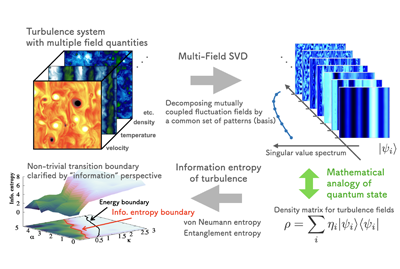
Information entropy untangles vortices and flows in turbulent plasmas
Turbulence in nature refers to the complex, time-dependent, and spatially varying fluctuations that develop in fluids such as water, air, and plasma. ...
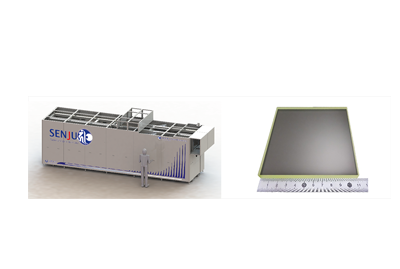
Development of a Key Component for Laser Fusion
Nippon Electric Glass Co., Ltd. (Head Office: Otsu, Shiga, Japan; President: Akira Kishimoto), Institute of Laser Engineering at Osaka University, National Institute of Fusion Science, and Kyoto University have developed "Glass Faraday Element" as key component of large high-power lasers. ...
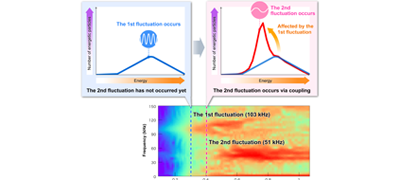
Clarifying the mechanism of coupled plasma fluctuations using simulations
In nature, phenomena in which multiple fluctuations occur in a coupled manner are frequently observed. ...
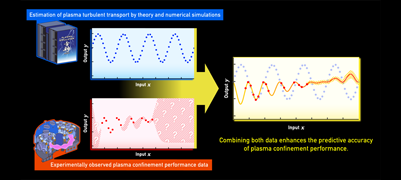
Improved predictive accuracy of fusion plasma performance by data science
Fusion energy research is being pursued around the world as a means of solving energy problems. Magnetic confinement fusion reactors aim to extract fusion energy by confining extremely hot plasma in strong magnetic fields. ...
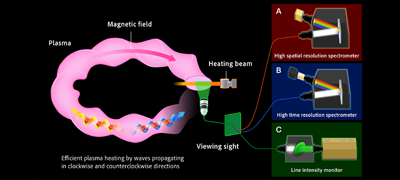
Approaching the unexplored “plasma phase-space” with data science
A paper summarizing the results of this research was published in the Proceedings of the National Academy of Sciences on November 8. ...
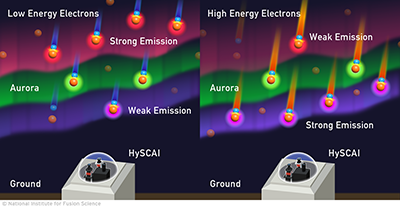
First full 2-D spectral image of aurora borealis from a hyperspectral camera
Auroras are natural luminous phenomena caused by the interaction of electrons falling from the sky and the upper atmosphere. ...
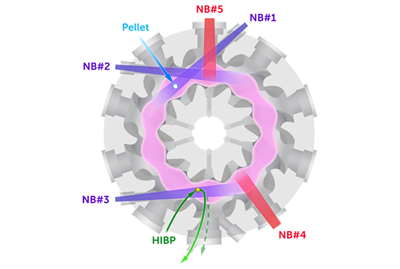
Discovery of spontaneous inflow and outflow states of high-temperature plasma by energetic ions
In the realm of fusion research, the control of plasma density, temperature, and heating is crucial for enhancing reactor performance. ...
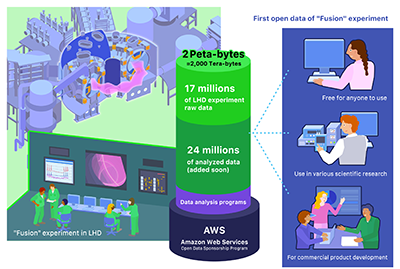
25 years of massive fusion energy experiment data completely open on the “cloud”, to be available to everyone
High-temperature fusion plasma experiments conducted in the Large Helical Device (LHD) of the National Institute for Fusion Science (NIFS), have renewed the world record for an acquired data amount. ...
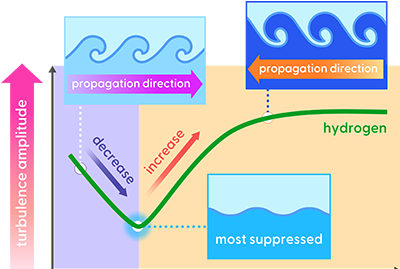
The discovery of new turbulence transition in fusion plasmas: The road to innovative operation scenarios for fusion power plants
Fusion energy is that released when two light nuclei combine to form a single heavier one (nuclear fusion reaction). ...
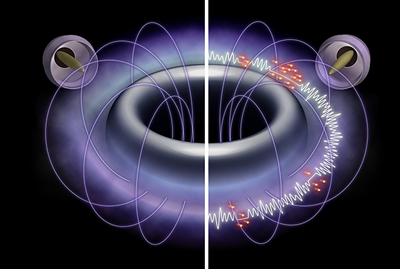
Laboratory study on conditions for spontaneous excitation of "chorus emission," wave of space plasma
A dipole magnetic field, created by a ring current, is the most fundamental type of magnetic field that is found both in laboratories and in space. ...
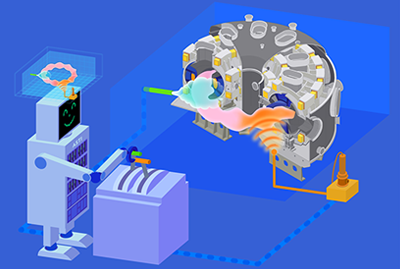
First demonstration of predictive control of fusion plasma by digital twin: Application of data assimilation to adaptive predictive control
In order to realize fusion power generation using the magnetic confinement method, it is necessary to control ultra-high temperature plasmas exceeding 100 million degrees Celsius over a long period of time. ...
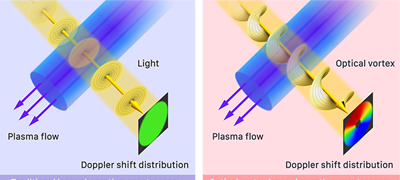
Measuring flow with twisted light - Exploring New Possibilities in Laser Measurement –
Measuring particle flow from plasma to matter is critical regarding plasma-matter interactions. ...
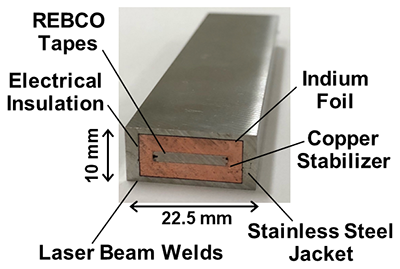
High-temperature superconducting large-current conductor with simple stacking : For accelerating realization and deployment of fusion reactors
In a magnetic confinement fusion reactor, a strong magnetic field generated by a superconducting magnet confines ultra-high-temperature plasmas of more than 100 million degrees Celsius. ...
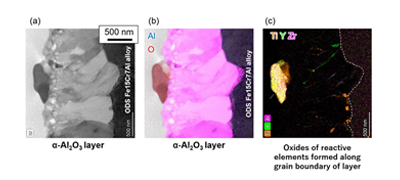
α-Al2O3 Protective Layer That Sticks to Metal Surface with Functions of an Anchor and Peg (Joint Research with Tokyo Institute of Technology)
Fusion reactors, fast breeder reactors, and solar thermal power plants are being developed as power plants with low environmental impact and no resource constraints. ...
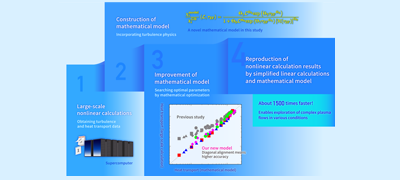
Simplified calculations reproduce complex plasma flows:Advances in theoretical studies on turbulence-driven heat transport in fusion plasms
Accurate and fast calculation of heat flow (heat transport) due to fluctuations and turbulence in plasmas is an important issue in elucidatingthe physical mechanisms and in predicting and controlling the performance of fusion reactors. ...
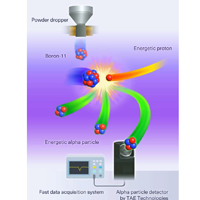
Demonstration of fusion reactions using advanced fusion fuels
The National Institute for Fusion Science and TAE Technologies research group has demonstrated the world's first fusion reaction between hydrogen and boron-11 in a magnetic confinement fusion plasma, using the Large Helical Device. ...
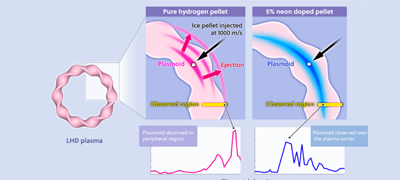
Cooling 100 million degree plasma with a hydrogen-neon mixture ice pellet: Progress in research on plasma cooling technology for the world’s largest nuclear fusion experimental reactor
At ITER – the world’s largest experimental fusion reactor, currently under construction in France through international cooperation – the abrupt termination of magnetic confinement of a high temperature plasma through a so-called “disruption” poses a major open issue. ...
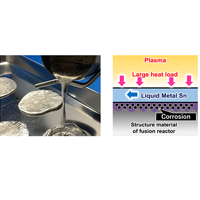
Mitigating corrosion by liquid tin could lead to better cooling in fusion reactors
Researchers at Tokyo Institute of Technology and the National Institute for Fusion Science have clarified the chemical compatibility between high temperature liquid metal tin (Sn) and reduced activation ferritic martensitic, a candidate structural material for fusion reactors. ...
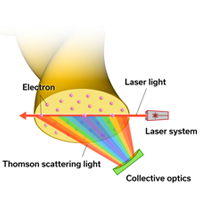
Development of high-time-resolution measurement of electron temperature and density in a magnetically confined plasma
Fusion power generation uses the energy generated by fusion reactions in high-temperature plasma. ...
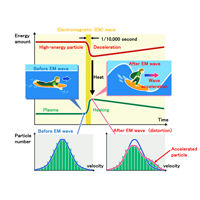
The process of waves carrying plasma heat is observed for the first time in the world
In fusion power generation, it is essential that the high-energy particles generated by a fusion reaction in hot plasma heat it to sustain further fusion reactions. ...
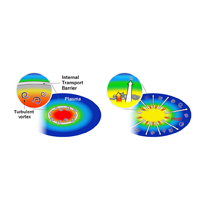
Discovery of high-speed moving plasma turbulence for the first time in the world
In order to achieve a fusion power plant, it is necessary to stably confine a plasma of more than 100 million degrees Celsius in a magnetic field and maintain it for a long time. ...
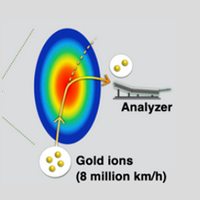
Successful improvement of plasma thermal insulation layer with deuterium
In order to achieve nuclear fusion power generation, it is necessary to confine the plasma in a magnetic field and to make the center of the plasma hotter than 100 million degrees Celsius.・・・
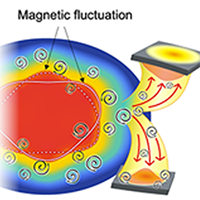
Plasma turbulence spreading by magnetic fluctuation reduces heat load on a fusion device wall
A research group led by Associate Professor Masahiro Kobayashi of the National Institute for Fusion Science (NIFS) has discovered that in the Large Helical Device (LHD), ...
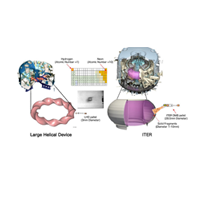
Cooling a plasma of 100 million degrees by ice pellet – Emergency plasma shutdown system in ITER
The Large Helical Device has performed a new experiment that injected ice pellets made of neon, which are planned to be used by the emergency shutdown system in ITER. ...
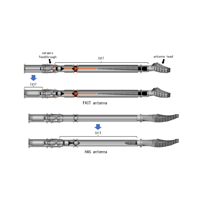
Improvement of ICRF Antenna Performance with Impedance Transformers
The Large Helical Device (LHD) is equipped with two types of antennas for Ion Cyclotron Range of Frequencies (ICRF) heating. One is the high-power-oriented antenna called the FAIT antenna, and the other is called the HAS antenna, where the wavenumber parallel to the magnetic field lines can be controlled. ...
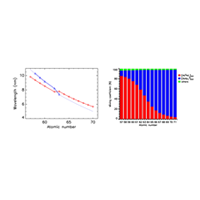
Experimental and Theoretical Verification of Atomic Physics Effects Specific to Highly Charged Heavy Ions
We have investigated atomic number (Z) dependence of transition wavelengths of gallium-like lanthanide ions, based on spectroscopic measurements in the Large Helical Device (LHD) and an electron beam ion trap (EBIT). A peculiar Z dependence of the wavelength was found between Z=62 and 63. ...
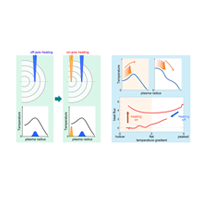
Investigating plasma transport with a hollow temperature profile by heat pulse propagation
Heat transport in fusion plasmas is often modeled as a temperature gradient. In contrast, when a narrow region away from the plasma center is heated to create a plasma with a peculiar hollow temperature profile, and then a narrow region near the center is additionally heated, a transient phenomenon was observed in which the heat pulse propagates against the temperature gradient. ...
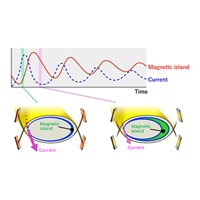
Self-sustained divertor oscillation mechanism identified in fusion plasma experiment
To harness the forces that power the Sun to produce substantial clean energy on Earth, researchers heat fuel to such a high temperature that atoms melt into electrons and nuclei to form a hot, ...
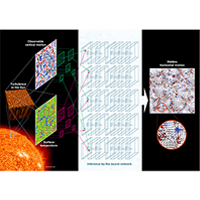
Deep Neural Network to Find Hidden Turbulent Motion on the Sun
A research group led by the National Astronomical Observatory of Japan (NAOJ), the National Institute for Fusion Science (NIFS), ...
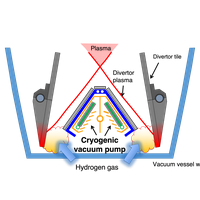
Control of plasma particles by powerful vacuum pumping
In plasma experiments in the Large Helical Device (LHD), we discovered that the controllability of plasma particles can be improved by compressing fuel particles in a region called the divertor and by pumping them out strongly with a cryogenic vacuum pump. ...
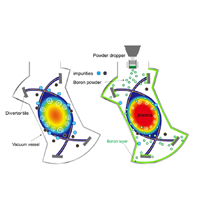
Boron powder injection makes plasma temperature increase
In order to realize fusion power generation, it is necessary to maintain a high-temperature plasma...
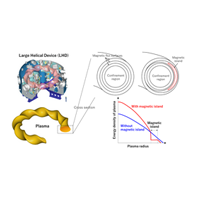
Good core plasma performance realized in deuterium plasmas compatible with heat load mitigation at the plasma facing components
In a deuterium plasma experiment in large helical device (LHD), we have succeeded in reducing the excessive heat load on the device wall while maintaining the performance of the confined plasma. ...

Impact of Magnetic Field Configuration on Suppression of Turbulence
In order to realize fusion power generation, high-temperature plasma*1 must be confined by a magnetic field. ...
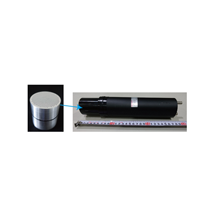
Advances in Understanding Energetic Ion Transport by Magnetic Field Oscillations
In future fusion burning plasmas, there is a concern that energetic alpha particles may escape due to magnetic field oscillations caused by the pressure of alpha particles, which is the main heating source of the plasma. ...
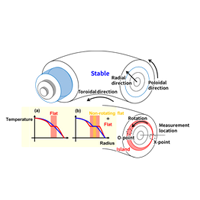
First observation of characteristic fine structure of global plasma fluctuations
In magnetic confinement plasmas, the rapid growth of temperature fluctuations after their rotation stops is a problem, and a new measurement technique at the LHD has successfully measured the fine structure of temperature fluctuations during the slowing-down of the rotation. ...
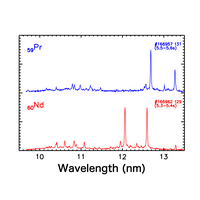
Spectral line identifications of highly charged praseodymium and neodymium ions in LHD
https://www-lhd.nifs.ac.jp/pub/Science_en/Paper_ATOMS9-46.html ...
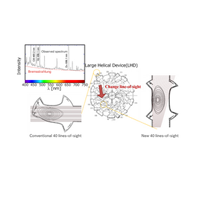
Improved measurement of the effective ion charge represented the amount of impurities in the plasma
We have improved the measurement of the effective ion charge (Zeff), which represents the amount of impurities in the plasma in the Large Helical Device (LHD). ...
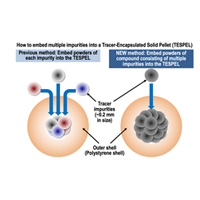
A new method for simultaneously injecting different impurities into the plasma
In a tracer-capsulated solid pellet (TESPEL) scheme, which is a technique for locally depositing impurities to the desired location in high-temperature plasmas, we have developed a new method for injecting multiple impurities, which is completely different from the previous method. ...
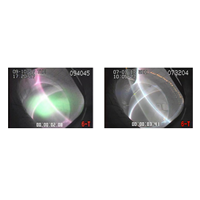
Prediction of Unusual Emission of Visible Light in Plasma Experiments by using Machine Learning
In plasma experiments at the Large Helical Device (LHD), an unusual emission of visible light inside the plasma vessel has been observed. ...
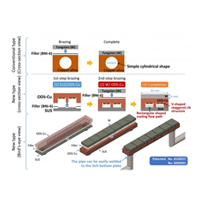
Developing the novel joint technique for copper alloy: This highly contributes to producing the efficient heat removal component for fusion reactor
The oxide dispersion strengthened copper alloy (ODS-Cu) is superior in thermal conductivity, electrical conductivity, heat resistance and friction tolerance, etc. ...
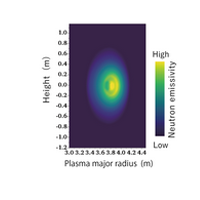
Measuring the spatial distribution of energetic particles in a plasma
In future fusion plasmas, energetic particles produced by fusion reactions will heat the plasma and maintain a high temperature and density. ...
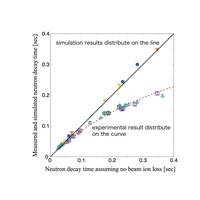
Analysis of NB Beam-Ion Loss Mechanisms in LHD
The beam ion loss mechanism in the Large Helical Device (LHD) has been analyzed quantitatively by using neutron measurement and integrated simulation*. ...
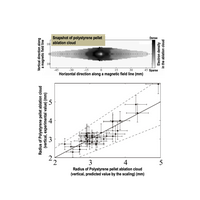
Advances in the understanding of pellet injection as a plasma diagnostic technique
The technique of injecting small solid materials called “pellets” into high-temperature plasma is indispensable for fueling and maintaining plasma performance in future fusion reactors. ...
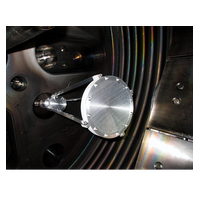
Development of new instrument for micro-scale turbulence observation
We have developed an instrument to measure the micro-scale turbulence in high temperature plasmas with high accuracy. ...

Development of a broadband mid-infrared source for remote sensing
A research team of the National Institutes of Natural Sciences, National Institute for Fusion Science and Akita Prefectural University have successfully demonstrated a broadband mid-infrared (MIR) source with a simple configuration. ...
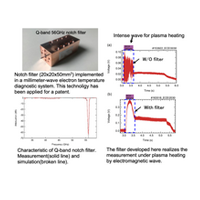
Development of High-Performance Millimeter-Wave Filters for Diagnostics of Internal Structure of Ultra-High-Temperature Plasmas
In fusion reactors, millimeter-wave megawatt electromagnetic waves are used to heat the plasma to 100 million degrees Celsius, where a fusion reaction occurs. ...
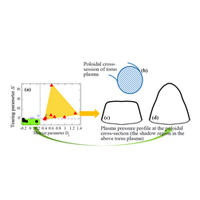
Identification of the criteria for the plasma collapse discharge in helical plasmas
In the LHD, the plasma discharges, with the cases predicted to be unstable in MHD instabilities before construction, are maintained without any collapse phenomena. On the contrary, in the discharges predicted to be very unstable in theory, the collapse phenomena are observed. ...
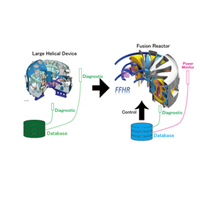
Control of energy output from fusion plasma
In a future fusion reactor, energy will be produced by deuterium and tritium reactions. We can control the fusion output by changing the plasma parameters such as density and heating power. ...
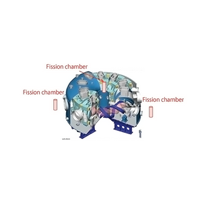
Development of standard neutron flux monitor for fusion research
The Large Helical Device (LHD) has been conducting plasma discharges using deuterium gas, so-called deuterium experiments, since March 2017 to improve plasma performance. ...
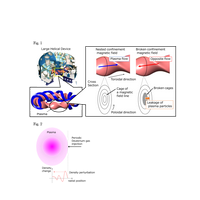
First observation of degradation of confinement and reversal of plasma flow due to broken confinement magnetic field
High-temperature and high-density plasma should be maintained in the fusion reactor vessel with a high confinement state. ...
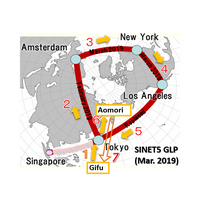
Remote Experiment from the Opposite Side of the Earth
Technical verification has been progressing for high efficiency data replication between ITER and the Remote Experimentation Centre (REC) in Japan. ...
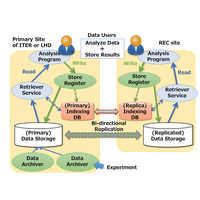
Data location informing service to quickly find out the data distributed in remote sites
The ITER Remote Experimentation Centre (REC) in Japan is planning to replicate all the data, as fast as possible, from ITER in France which is more than 10 000 km away. ...
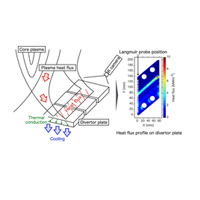
Construction of the measuring system for plasma heat flux to the wall
Significant heat flux is expected at the wall called “the divertor plate” in the fusion device. The present study constructed the system for measuring the divertor heat flux by 2 dimensional (2D) thermography and thermal conduction analysis in the Large Helical Device (LHD). ...
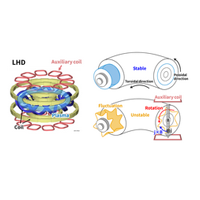
Slowing-down mechanism of rotating fluctuation in magnetic confinement plasmas
In the magnetic confinement plasmas of the Large Helical Device (LHD), a rotating fluctuation is often observed and its frequency sometimes decreases to almost zero. ...
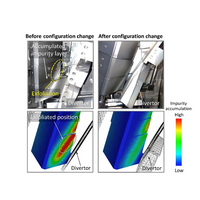
Impurity accumulation layer profiles in the Large Helical Device have been successfully reproduced by simulation
In the Large Helical Device (LHD), for every plasma discharge, impurity layers have accumulated on the in-vessel-components. The layers are very fragile and are characterized by an exfoliation property. ...
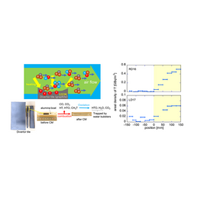
Remaining tritium in graphite divertor tiles were quantitatively analyzed by using a full-combustion method
To reveal the triton transport and the tritium migration in a deuterium plasma experiment in LHD, remaining tritium in divertor tiles made of graphite was investigated by using a combustion method. ...
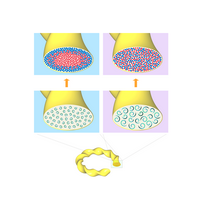
Discovering Turbulence to Help Plasma Mixing
The mixing state of hydrogen and deuterium in plasma was measured for the first time in the world in a mixed plasma experiment using hydrogen and deuterium in a large helical device (LHD). ...
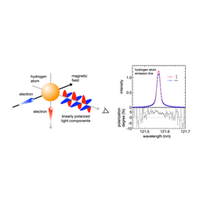
World's First Detection of Anisotropy in Electron Motion by Spectroscopic Measurement
In the Large Helical Device (LHD), the polarization of light emitted by hydrogen atoms has been measured with an accuracy of 1%. ...
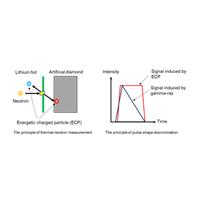
Neutron measurement using an artificial diamond
We established a pulse shape discrimination method for evaluating thermal neutron flux using an artificial diamond detector. ...
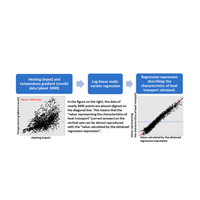
Let the accumulated data talk about the state of plasma
We have developed a method for grasping the state of plasma using a large amount of data accumulated in experiments in the Large Helical Device (LHD) and have succeeded in demonstrating its practicality. ...
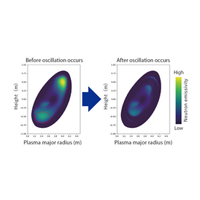
Investigating the cause of the disturbance in maintaining the high-ion temperature state
The Large Helical Device (LHD) has achieved ion temperatures above 120 million degrees Celsius. In high-ion temperature plasma discharges, magnetic field oscillations, generated by the pressure of the energetic ions, occur frequently. ...
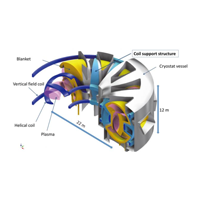
Lose weight of fusion reactor component
The group of associate professor Hitoshi Tamura and others of the National Institute of Natural Sciences (NINS) National Institute for Fusion Science (NIFS) first applied topology optimization technique to the concept design of a helical fusion reactor which aims to demonstrate power generation. ...
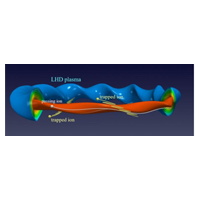
An accurate simulation of high-pressure plasma for an economical helical fusion reactor
The research team of Assistant Professor Masahiko Sato and Professor Yasushi Todo of the National Institutes of Natural Sciences (NINS) National Institute for Fusion Science (NIFS) has succeeded using computer simulation in reproducing the high-pressure plasma confinement observed in the Large Helical Device (LHD). ...
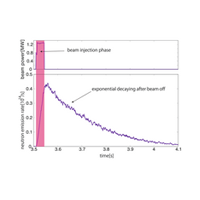
Estimation of the beam ion confinement time in LHD
The confinement time of fast ions, which are generated by the neutral beam injection, has been estimated quantitatively in the LHD deuterium experiment by using neutron measurement and integrated simulation. ...
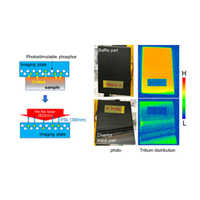
First observation of tritium distribution on plasma facing surfaces in stellarator/heliotron devices
Tritium distribution on plasma facing surfaces after the first deuterium plasma experimental campaign, conducted over four months, was investigated in the Large Helical Device (LHD) for the first time in stellarator/heliotron devices by using the tritium imaging plate technique. ...
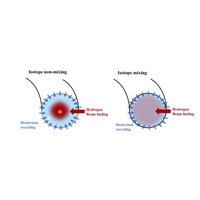
Isotope movement holds key to the power of fusion reactions
Fusion may be the future of clean energy. The same way the sun forces reactions between light elements, such as hydrogen, to produce heavy elements and heat energy, fusion on Earth can generate electricity by harnessing the power of elemental reactions. ...
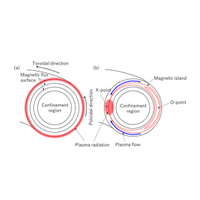
Mechanism of plasma radiation concentration at “knot”of magnetic field lines
It has been reproduced in the newly developed simulation code that plasma radiation concentrates at the “knot” of the magnetic field lines, and its mechanism is recognized as the same as thermal condensation instability, which also occurs at star formation in the universe. ...
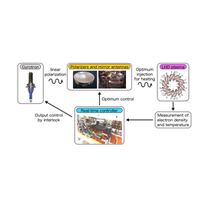
Real-time control of millimeter-wave propagation for highly efficient plasma heating
We have developed a real-time control system for the millimeter-wave injection system for electron cyclotron heating and have shown that the system can heat the plasma efficiently by optimizing the injection for the time-varying plasma in the Large Helical Device (LHD)....
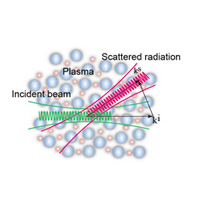
Ion measurement by millimeter and sub-millimeter in plasma
In high-temperature plasmas, it is not easy to diagnose the state of ions and fast ions because they cannot be measured directly by a thermometer. ...
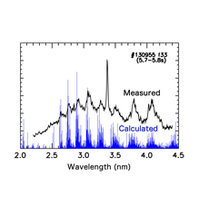
Development of an experimental database of emission spectra from various elements using LHD
Various elements with atomic numbers from 36 to 83 have been injected into LHD plasmas to observe their emission spectra. Spectra for various atomic numbers and electron temperatures have been systematically investigated by comparisons with theoretical calculations. ...
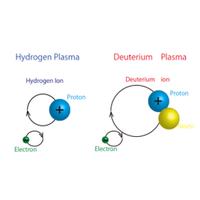
Better confinement characteristics in deuterium plasma than in hydrogen plasma
For the prediction of future reactor performance with deuterium and tritium plasma, confinement characteristics are compared in hydrogen and deuterium plasmas. ...
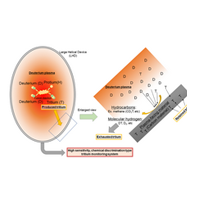
Explore the behavior of hydrogen isotopes using a tracer
Hydrogen isotopes' behavior in a fusion test device has been clarified by use of a small amount of tritium, that was produced in deuterium plasma using the Large Helical Devices (LHD) as a tracer. ...
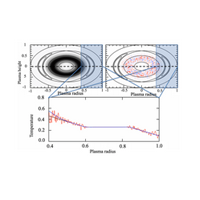
Turbulence permeating the inner part of a plasma magnetic island
The "instantaneous heat propagation method" devised for the Large Helical Device (LHD) at the National Institute for Fusion Science was applied to a tokamak device (Doublet III-D) in the United States. ...
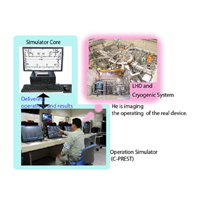
Operating Simulator of Large Superconducting Magnetic Cooling Device - Heading for the early establishment of an optimal design and an operating method –
The Large Helical Device (LHD) generates strong magnetic fields to confine plasma by cooling the large superconducting magnet to an extremely low temperature of -270K. ...
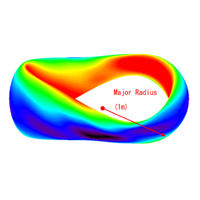
Joint Project between National Institute for Fusion Science and Southwest Jiaotong University in the People’s Republic of China
National Institute for Fusion Science(NIFS) enters into academic agreements with universities and laboratories around the world to promote many collaborative research projects. ....
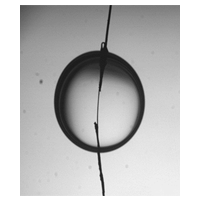
Exploring the Conditions for the Use of Superfluid Helium:Boiling Experiment under Exceedingly Minute Gravity
In the Large Helical Device, in order to generate a magnetic field for confining plasma, using liquid helium we cool the helical coils to a temperature of – 270 degrees Celsius. ...
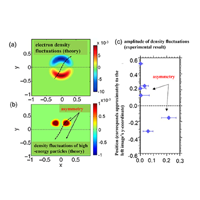
Asymmetry that Appears in Plasma: Comparison between Density Measurements Based upon the Heavy Ion Beam Probe and Theoretical Research
In physics research “symmetry” is an extremely important concept. What is symmetry? For example, when we fold a star mark ✩ in half vertically through the center, the folded mark will perfectly overlap. ...
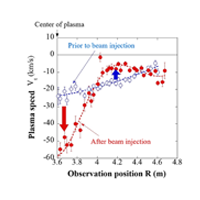
Research on Flows Born in Plasmas: Seeking to Clarify the Influence of the Flow upon Plasma Performance
The word “flow” is commonly heard in phrases such as “flow of the river,” “air flow” (current and wind), and “the flow of people.” ...
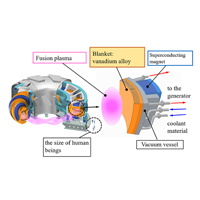
Developing New Materials for the Fusion Reactor: Success in Developing Vanadium Alloys Strong at High Temperatures and Appropriate for Manufacturing and Welding
In the future fusion reactor, the blanket, which is an important equipment for generating electricity, will be installed. ...
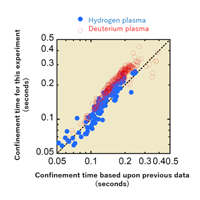
Improvement of Confinement Performance in Deuterium Experiments: Comparison of Energy Confinement Times
In order to achieve fusion energy, it is necessary to confine high-temperature plasma in the magnetic field for a long period of time. ...

Visualization Research Utilizing an Immersive Virtual Reality Device: Constructing Helical DEMO Reactor in a Virtual Space
The term “virtual reality” is heard frequently. At the National Institute for Fusion Science (NIFS) is an immersive virtual reality device called the CompleXcope. ...
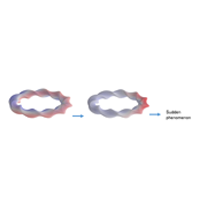
Mechanisms of Sudden Phenomenon Eruptions:New Discoveries for Immediate Prediction of Plasma Loss
When observed over a long period of time, there are phenomena that will occur certainly some day and for which it is difficult to accurately when an event will occur. ...
Plasma Research Extending to the Fields of Energy, Medical Treatment, Industry, and Outer Space: Presentations Delivered at the National Institutes of Natural Sciences Research Symposium
The National Institutes of Natural Sciences has held the “Natural Sciences Research Symposium” since 2005. At this conference, researchers explain leading edge research in the sciences to the general public in an easy to understand manner. ...
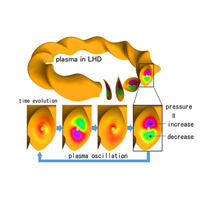
Simulations demonstrate ion heating by plasma oscillations for fusion energy
A research team of fusion scientists succeeded in proving that ions can be heated by plasma oscillations driven by high-energy particles. ...

Demonstration of alpha particle confinement capability in helical fusion plasmas
A team of fusion researchers succeeded in proving that energetic ions with energy in mega electron volt (MeV) range are superiorly confined in a plasma for the first time in helical systems. ...
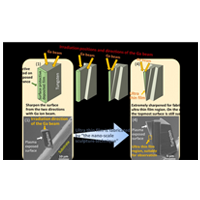
Fusion scientists have developed 'the nano-scale sculpture technique'
A research team of fusion scientists has succeeded in developing "the nano-scale sculpture technique" to fabricate an ultra-thin film by sharpening a tungsten sample with a focused ion beam. ...
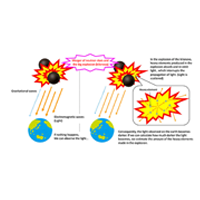
Making it possible to analyze light coming from the universe for approaching the origin of heavy ions: Computing atomic data of the highest precision
Various kinds of elements exist around us. Almost all of the elements were created in the universe.※ It is believed that the universe was born by the Big Bang of the phenomena such as the big explosion. Then, light elements such as hydrogen and helium and so on were made. ...
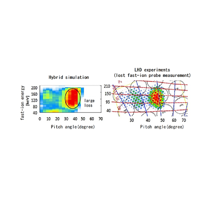
Predicting behaviors of fast ions:Comparative research of hybrid simulation with experiments
To achieve fusion power, it is necessary to heat plasma to a high temperature of more than one hundred million degrees so that the fusion reaction continues. ...

Fusion Science and Astronomy Collaboration Enables Investigation of the Origin of Heavy Elements
A research team of experts in atomic physics, nuclear fusion science, and astronomy succeeded in computing millions of highly accurate atomic data of neodymium ions in the Japan-Lithuania international collaboration. This research accelerates studies of a long-standing mystery regarding the origin of precious metals such as gold and platinum in our universe. ...
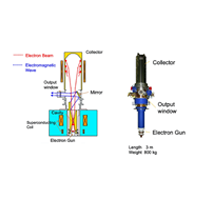
Generating powerful electromagnetic waves heating plasma electrons:Design developing research of gyrotron
To achieve nuclear fusion power, it is necessary to heat plasma to the extreme high temperature of more than one hundred million degrees. One of the means for heating plasma is a method in which strong electromagnetic waves are launched into plasma. ...
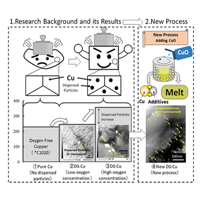
Metal receiving heat from the sun of the ground :Developing the Dispersion Strengthening Copper carrying cooling function
Stars of the Universe, such as the sun, shine due to the fusion reaction. Fusion power makes the fusion reaction on the earth and generates electricity by taking out energy from the fusion reaction. To achieve this, the development of instruments that receive energy generated in the fusion reactor is one of the important issues. ...
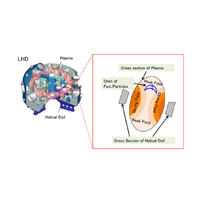
Fast Particles Distort Electric Potential in the Plasma:High-Precision Particle Simulation Research
Many people see lightning flashes in the hanging dark clouds and below the clouds. At the moment the lightning flashes, the electric currents are flowing in the lightning. ...
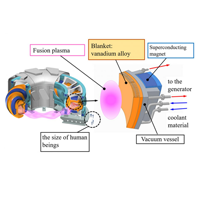
Developing new materials for the fusion reactor
In the future fusion reactor, plasma is confined by using the magnetic field inside the doughnut-shaped vacuum vessel. ...

Operating Simulator of Large Superconducting Magnetic Cooling Device - Heading for the early establishment of an optimal design and an operating method –
The Large Helical Device (LHD) generates strong magnetic fields to confine plasma by cooling the large superconducting magnet to an extremely low temperature of -270K. ...

Joint Project between National Institute for Fusion Science and Southwest Jiaotong University in the People’s Republic of China
National Institute for Fusion Science(NIFS) enters into academic agreements with universities and laboratories around the world to promote many collaborative research projects. ....

Exploring the Conditions for the Use of Superfluid Helium:Boiling Experiment under Exceedingly Minute Gravity
In the Large Helical Device, in order to generate a magnetic field for confining plasma, using liquid helium we cool the helical coils to a temperature of – 270 degrees Celsius. ...

Asymmetry that Appears in Plasma: Comparison between Density Measurements Based upon the Heavy Ion Beam Probe and Theoretical Research
In physics research “symmetry” is an extremely important concept. What is symmetry? For example, when we fold a star mark ✩ in half vertically through the center, the folded mark will perfectly overlap. ...

Research on Flows Born in Plasmas: Seeking to Clarify the Influence of the Flow upon Plasma Performance
The word “flow” is commonly heard in phrases such as “flow of the river,” “air flow” (current and wind), and “the flow of people.” ...

Developing New Materials for the Fusion Reactor: Success in Developing Vanadium Alloys Strong at High Temperatures and Appropriate for Manufacturing and Welding
In the future fusion reactor, the blanket, which is an important equipment for generating electricity, will be installed. ...

Improvement of Confinement Performance in Deuterium Experiments: Comparison of Energy Confinement Times
In order to achieve fusion energy, it is necessary to confine high-temperature plasma in the magnetic field for a long period of time. ...

Visualization Research Utilizing an Immersive Virtual Reality Device: Constructing Helical DEMO Reactor in a Virtual Space
The term “virtual reality” is heard frequently. At the National Institute for Fusion Science (NIFS) is an immersive virtual reality device called the CompleXcope. ...

Mechanisms of Sudden Phenomenon Eruptions:New Discoveries for Immediate Prediction of Plasma Loss
When observed over a long period of time, there are phenomena that will occur certainly some day and for which it is difficult to accurately when an event will occur. ...
Plasma Research Extending to the Fields of Energy, Medical Treatment, Industry, and Outer Space: Presentations Delivered at the National Institutes of Natural Sciences Research Symposium
The National Institutes of Natural Sciences has held the “Natural Sciences Research Symposium” since 2005. At this conference, researchers explain leading edge research in the sciences to the general public in an easy to understand manner. ...

Sending “Big Data” at the World’s Fastest Speed: Collaboration between the Research Center at Rokkasho and Other Institutes
The Large Helical Device (LHD) is used not only by the National Institute for Fusion Science, but also jointly by researchers at universities throughout Japan. Further, when the International Thermonuclear Experimental Reactor (ITER) under construction at present is completed and operation begins, researchers around the world will begin to conduct collaborative research by utilizing ITER. ...
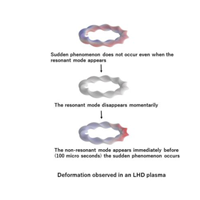
A new discovery that makes possible prediction immediately before plasma loss
In phenomena occurring in nature and in society, it is often commented that "Something may happen at any time, but it is difficult to predict when that something may occur. ...
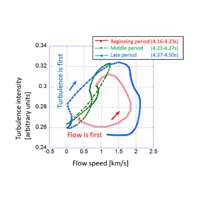
Which Came First, the Chicken or the Egg?: Investigating the Law of Causality in the Generation and Suppression of Turbulence
Recently, throughout Japan wild boars, or inoshishi, and other wild animals have been sighted and reported in the news. ...
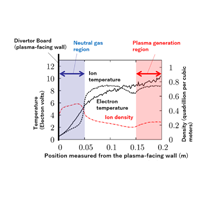
A High-Precision Simulation of “Detached Plasma” that Mitigates Plasma Heat Load to the Divertor: Development of a Precise Calculation Program for Pursuing the Movement of Various Kinds of Particles
In the Large Helical Device (LHD) we confine high temperature plasma in the magnetic field. Plasma consists of electrons and ions that have borne electrical charge (charged particles). ...
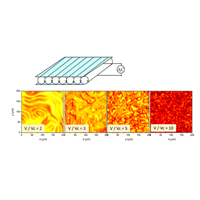
Visually Investigating Turbulent Flows by Using Liquid Crystal: Experimental Research on Transport by Convection
When we heat water in a pan on the stove, the water at the bottom of the pan is heated and the temperature of all the water in the pan increases. ...
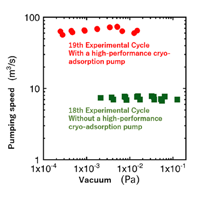
Realization of High-efficiency Pumping Using High-performance Cryo-adsorption Pumps: Evacuating Particles Collected at the Divertor in the Vacuum Chamber
In the Large Helical Device (LHD), after having evacuated the vacuum vessel by pump, we introduce hydrogen gas and produce a plasma. Evacuation is undertaken by a pump placed outside of the vacuum vessel (this is called the primary pump). ...
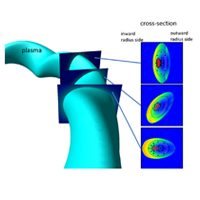
Research on the Fuel Supply through Pellet Injection: Optimization through the Supercomputer
In the future production of fusion energy, together with maintaining high-temperature plasma, from outside we will continue to supply hydrogen isotope (hereafter as hydrogen), which will become fuel, for continuing the fusion reaction. ...
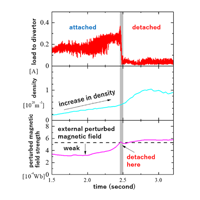
Producing Gentle Plasma for the Divertor: Many Magnetic Field Structures Seem Possible
In the Large Helical Device, the magnetic field container confines the hot plasma. The plasma particles gradually disperse toward the last closed flux surface area of the container. For this reason, plasma diffusing to the edge is led toward the divertor. ...
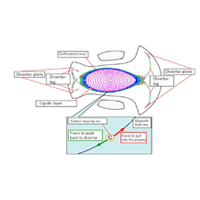
Impurities Flowing Away from Plasma: Observations of Impurity Screening Effects by Spectroscopic Measurements
In the Large Helical Device (LHD), a doughnut-shaped container is produced by magnetic field lines, and high-temperature plasma is confined. ...
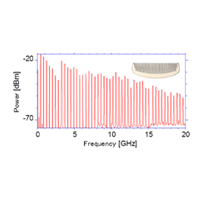
Measuring the Structure of Large Numbers of Turbulent Flows Using a Comb: Developing Diagnostics Using a Frequency Comb
It is thought that Japanese people too from ancient times have greatly enjoyed combs. You might feel strange if you hear that those combs are extremely helpful for investigating plasmas. ...
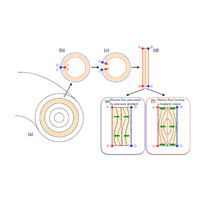
Examining the Magnetic Island Generation Mechanism through Simulations: Large Deformations Induce New Instabilities
We often hear that “the weather is unsettled” in the weather report. High-temperature plasma too is “unstable. ...
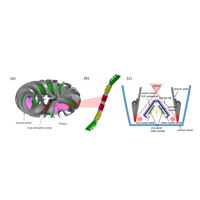
Success in enhancing performance of the cryogenic adsorption pump used in the divertor
The cryogenic adsorption pump (hereafter cryo-adsorption pump) uses carbon and has the special feature of being able to achieve large evacuation capacity even with a small size. ...
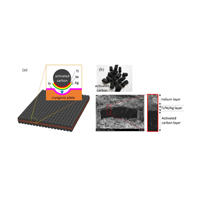
Effectively Evacuating Hydrogen Gas from Inside the Vacuum Vessel:Development of the Cryogenic Adsorption Pump for Evacuating System
In the Large Helical Device we produce plasma by introducing hydrogen gas into the vacuum vessel. Because the remaining hydrogen gas that did not become plasma reduces the plasma temperature, it must be evacuated to outside. ...
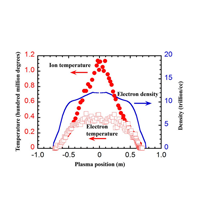
Ion temperature of one hundred million degrees achieved
In order to achieve burning plasma, it is necessary to steadily maintain high-temperature and high-density plasma. In plasma research conducted to date on the LHD, utilizing the special characteristics of helical-type magnetic confinement, we have demonstrated excellent qualities in steady-state operation and high-density plasma. ...
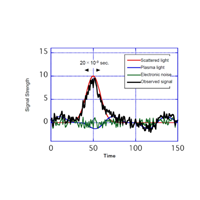
Measuring Temperature Accurately by Reducing Noise:Enhancing Thomson Scattering Diagnostics
The high temperature plasma generating devices around the world, including the Large Helical Device (LHD), utilize Thomson scattering diagnostics for measuring an electron temperature and electron density. ...
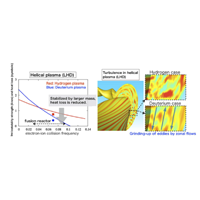
Suppression of Turbulence and Heat Loss by Deuterium Plasma:Physical Mechanisms Solved by Supercomputers
In achieving the generation of fusion energy, it is necessary to confine plasma over a long duration and to maintain the high-temperature condition that exceeds one hundred million degrees. ...
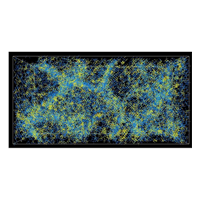
How do impurities move in tungsten?
One part of the vacuum vessel (the plasma facing material) of the fusion experimental device and future fusion reactor comes into contact with plasma. ...
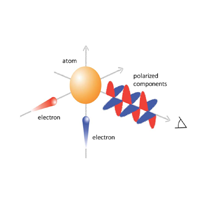
Investigating the Anisotropy of Plasma:Polarization Spectroscopy Diagnostics
Large Helical Device plasma is confined using the magnetic field. Electrons in the plasma move around the magnetic field lines, and their trajectory follows a helical shape. This is because the electrons move freely in the direction of the magnetic field, however, they circulate in a plane perpendicular to the magnetic field. ...
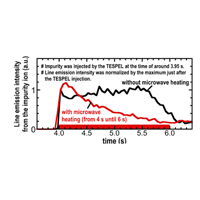
Expelling Impurities by Microwaves: A Method for Cleaning Plasma
In order to achieve fusion energy it is necessary to maintain a plasma at a sufficiently high temperature for the fusion reaction to occur over an extended period of time. ...
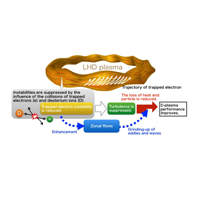
Clarifying the mechanism for suppressing turbulence through ion mass
Seeking to further improve plasma performance, from March 7, 2017, plasma experiments utilizing deuterium ions, which have twice the mass of hydrogen, were initiated in the Large Helical Device (LHD) at the National Institute for Fusion Science (NIFS). ...
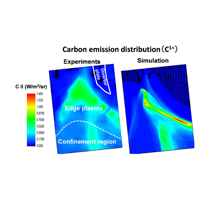
Toward an Understanding of Edge Plasma: Comparing Experiment and Numerical Simulation
In order to realize fusion energy, together with improving the performance of core plasma confined in the magnetic field cage it also is necessary to understand the behavior of edge plasma. ...
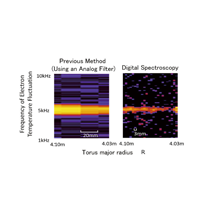
Detailed Measurements of Electron Temperature Fluctuations with Digital Spectroscopy: Electron Cyclotron Emission Measurement
When we discuss spectroscopy we think of light being separated into seven colors by a prism. We call the process of the light (electromagnetic wave) signal by digitalization digital spectroscopy. ...
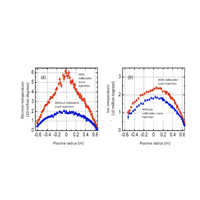
Heating Ions through Heat from Electrons: Heating Experiments Using High-Power High-Frequency Electromagnetic Waves
In the future fusion reactor, high-energy helium born from the fusion reaction of hydrogen isotopes will maintain the fusion reaction by heating plasma. ...
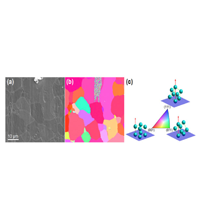
Plasma-Material Interaction Investigated by Electron Microscope: The Discovery of the Effect of Crystal Orientation
In the future fusion reactor, tungsten, which is hard and has a high melting point, is anticipated as the plasma facing material. ...
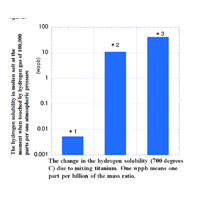
Confirming the Improvement of Hydrogen Solubility through the Mixing of Metallic Particles: Anticipating Application to the Coolants in the Fusion Reactor
In the future fusion reactor we will use deuterium and tritium (both are isotopes of hydrogen) as fuel, although tritium is almost non-existent in nature. ...

Calculating 1 billion plasma particles in a supercomputer
The generation of fusion energy utilizes the fusion reaction that occurs inside a high-temperature plasma. ...
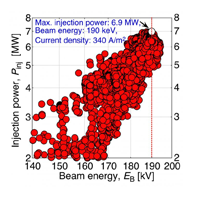
Clarifying the behaviors of negative hydrogen ions
The Neutral Beam Injection (NBI) is a method for increasing the plasma temperature and driving currents in magnetically-confined fusion plasmas by injecting neutral hydrogen/deuterium beams. ...
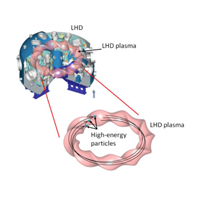
Clarifying Plasma Perturbations by High-energy Particles: Hybrid Simulations Using Particles and Fluids
We use deuterium and tritium to achieve the fusion reaction in the future. The high-energy alpha particles (helium ions) that are generated by the fusion reaction heat the plasma and bear the important role of maintaining the high temperature condition that is necessary for the fusion reaction. ...
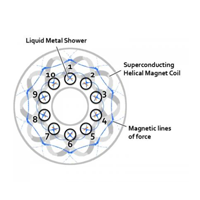
The fusion reactor that employs a liquid metal shower
In a magnetic field confinement fusion reactor, we maintain the high-temperature plasma through the magnetic field lines by floating the plasma apart from a vessel. However, there forms inevitably a location ...
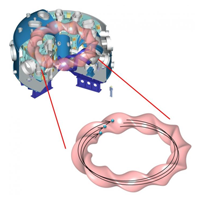
Clarifying the plasma oscillation by high-energy particles
Background to the Research High-energy alpha particles (helium ion) which are generated by the fusion reaction that uses deuterium and tritium bear the important roles of heating plasma and of maintaining the high temperature condition which is necessary for the fusion reaction. ...
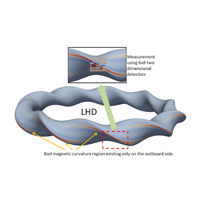
The Ballooning (Balloon-Type) Instability Caused by the Steep Pressure Gradient:Acquiring Hints Regarding Improvement of High-density Plasma Performance
The Large Helical Device (LHD) can maintain high-density plasma which other tokamak and other devices cannot attain at the same magnetic field strength as that of other devices. ...

First observations of tongue deformation of plasma based upon the Artsimovich Prediction
Aiming for the achievement of fusion energy, research on confining a high temperature, high density plasma in a magnetic field is being conducted around the world. ...
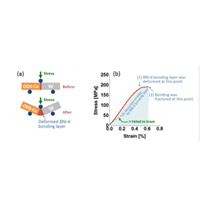
Establishing an advanced bonding technique for tungsten and copper alloys
The divertor is the device that continuously receives the extremely high heat and particle loads from the nuclear fusion plasma. ...
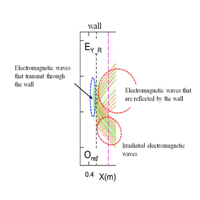
Investigating the Whereabouts of Waves inside a Plasma: The Development of an Observation Method Focusing on Cost-Performance
In the Large Helical Device (LHD), we inject electromagnetic waves in order to heat electrons inside the plasma. The electromagnetic waves often do not reach regions where the plasma density is high and often change into different waves having different properties. ...
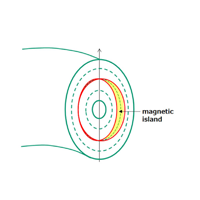
Observations of Fluctuations that Grow Together with Deceleration of Rotation:A Comparison of Helical and Tokamak Plasmas
An aurora dancing brightly in the evening sky is beautiful. An aurora is a plasma in the natural world, but the artificial plasma employed in fusion energy generation must be confined by utilizing a magnetic field container. ...

Large volumes of data from ITER successfully transferred to Japan at unprecedented speeds
The National Institutes for Quantum and Radiological Science and Technology (QST), as the implementing agency of the BA activities, in collaboration with the National Institutes of Natural Sciences (NINS) National Institute for Fusion Science (NIFS), the National Institute of Information and Communications Technology (NICT) ...
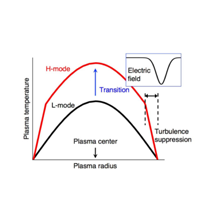
Clarifying the Physics of the Confinement Improvement Phenomenon of High-temperature Plasmas: Results that Approach Questions over the Past Thirty Years
In order to achieve fusion energy it is necessary to confine high-temperature plasma. However, when we heat plasma, a small spiral flow is generated, and there appear the problems of worsening of plasma confinement and avoiding a rise in temperature. ...
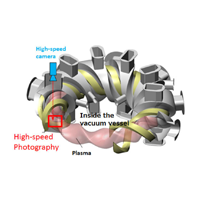
Imaging Diagnostics of LHD Plasma Using High-speed Cameras and a Simulation Analysis: The Movement of Dusts in Edge Plasmas
In the Large Helical Device (LHD) we watch and measure plasmas using high-speed cameras. Compared to video cameras sold in the market that take thirty images per second, high-speed cameras can take more than 100,000 images in one second, at an extraordinary speed. ...
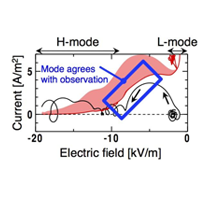
Clarifying the fusion plasma confinement improvement mechanism
In seeking the realization of the fusion reactor, research on confining high temperature and high density plasma in the magnetic field is being conducted around the world. ...
Discovery of a Method for Strongly Affixing Two Metals with Different Properties:Contributing to the High Performance of the Divertor’s Removal of the High Heat Load
In the magnetic confinement devices that are represented by the Large Helical Device (LHD), we confine high-temperature plasma in the magnetic field container, which is invisible to the human eye. ...
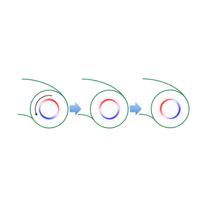
Investigating the Growth and Rotation of Plasma Fluctuations through Calculations: Linear Analysis and Nonlinear Simulation of Instabilities
In order to achieve fusion energy it is necessary to stably confine high-temperature, high-density plasma at a high pressure in the magnetic field container (though we say high pressure, it only becomes several atmospheric pressure). ...
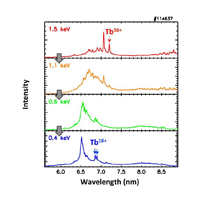
The discovery of new emission lines from highly charged heavy ions
Professors Chihiro Suzuki and Izumi Murakami's research group at the National Institute for Fusion Science, together with Professor Fumihiro Koike of Sophia University, injected various elements with high atomic numbers and produced highly charged ions(*1) in LHD plasmas. ...
Aiming the Electron Beam and Investigating the Light Emission:Collecting Light Emission Data from Ceramics Materials for the Fusion Reactor
In the future fusion reactor we will improve function by coating the surface of metallic materials with ceramic materials, for the purpose of insulating the surface electrically, and of preventing gas permeation and corrosion. ...
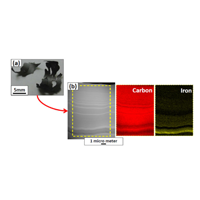
We Now Understand the Idea for Maintaining Fusion Plasma for an Extended Duration: Micro-sedimentary Accumulation Layer Controls Plasma Maintenance
In 2013 the Large Helical Device (LHD) succeeded in maintaining a plasma of 23,000,000 degrees for forty-eight minutes. This is a world record for long-term maintenance of a high-performance plasma. However, for achieving fusion energy it is necessary to maintain a plasma at more than 100,000,000 degrees throughout one year. ...
Discovering a New Plasma Confinement Condition:Results from the Japan-United States Joint Research
In the Large Helical Device (LHD) at the National Institute for Fusion Science development of methods for measuring the condition of high-temperature high-density plasmas confined in the magnetic field is being undertaken. ...
Seeking to Predict Plasma Movement in a Fusion Reactor: Reproduction of Collision Phenomena among Multiple Ion Species on Computer
Many people enjoy billiards. There are but ten billiard balls, but it is difficult to predict how the balls will collide into one another as they move on the table, and then to decide upon a shot. ...
Optical Devices Made of Ceramics that Cause the Phenomenon that the Father of Electricity “Faraday” Discovered: Toward Accurate Measurements of Plasma
Does everyone know of Michael Faraday (1791-1867)? He was an English scientist, and is known as “the father of electricity” for having discovered the law of electromagnetic induction, which is the principle of motors and generators. ...
Discovery of a New Abrupt Phenomenon in High-temperature Plasma in the Large Helical Device: Abrupt Generation of Large Amplitude Waves and Clarification of the Mechanism
In the Large Helical Device (LHD) a new “abrupt” phenomenon of plasma has been discovered. In this phenomenon, inside a high-temperature plasma “abrupt”ly a wave with a large amplitude is generated. ...
Predicting Plasma Turbulence and Energy Confinement:Reproducing LHD Deuterium Plasma Using Leading Edge Supercomputers
In achieving nuclear fusion power generation, it is necessary to confine the energy stored in a plasma for a long period of time and to maintain the extreme high temperature condition of higher than 100 million degrees. ...
Success in Extensive Coating of Oxidized Erbium Electrical Insulator:Development of High-performance Coating Technology inside a Pipe for an Advanced Blanket
In the future generation of fusion energy we will take out the kinetic energy of high-speed particles as heat, and utilizing that heat we will produce high-temperature high-pressure gas and generate electricity by turbines. ...
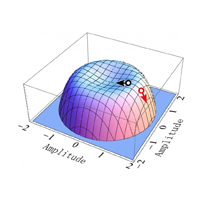
Abrupt excitation phenomenon in high-temperature plasma
At the National Institutes of Natural Sciences National Institute for Fusion Science, researchers have developed the high-energy heavy ion beam probe, in order to perform potential measurement inside a high-temperature plasma that was generated in the Institute's Large Helical Device (LHD). ...
Building a Wall that Withstands High Temperatures Using Liquid Metal:The Development of the Tin Shower Divertor
At the National Institute for Fusion Science, we make an extreme high-temperature plasma in a strong magnetic field and prevent the plasma from coming into contact with the vacuum vessel. ...
Transmitting Electromagnetic Waves for Plasma Heating with High Efficiency and High Quality: Numerical Simulation of Electromagnetic Wave Propagation in Waveguides
In the Large Helical Device (LHD) we heat electrons in plasma by using high frequency electromagnetic waves. In the method called electron cyclotron resonance heating (ECH) we inject powerful electromagnetic waves generated by a device called a gyrotron. ...
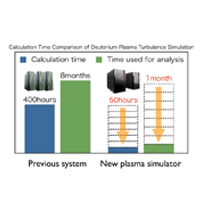
Accelerating fusion research through the cutting edge supercomputer
At the Inter-University Research Institute Corporation National Institutes of Natural Sciences National Institute for Fusion Science, for the first time in the world, using the newly installed "Plasma Simulator" we have simulated deuterium plasma turbulence in the Large Helical Device (LHD). ...
Investigating Plasma’s “Thread-like” Behavior by Computer Simulation: Microscopic Effects in Edge Plasma
Inside a vacuum vessel of a high-temperature plasma experiment device such as the Large Helical Device (LHD), we confine high-temperature high-density plasma by generating a magnetic field container. ...
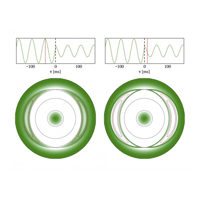
Discovery of a new confinement state for plasma
The National Institutes of Natural Sciences National Institute for Fusion Science applied the "Momentary Heating Propagation Method" to the DIII-D tokamak device operated for the United States Office of Science, Department of Energy, by the General Atomics and made the important discovery of a new plasma confinement state. ...
Enhancing the High Efficiency of Electron Cyclotron Resonance Heating: Estimating How Electromagnetic Waves Curve
In order to realize fusion energy the plasma temperature must be raised to more than 100,000,000 degrees. In the Large Helical Device (LHD), we are conducting research on the confinement of high-temperature plasma in a twisted nested container with magnetic fields that are invisible to the eye and produced by electromagnets. ...
LHD Plasma in Which Impurities Naturally Decrease: Research on Impurity Transport in Edge Plasma
By being confined in a doughnut-type magnetic field container, high-temperature plasma that aims for nuclear fusion power generation does not touch the vacuum vessel. ...
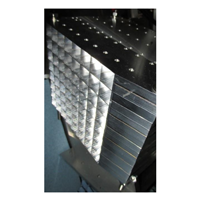
A 2-dimensional microwave camera has been developed
The National Institutes of Natural Sciences National Institute for Fusion Science has developed a high-speed two-dimensional microwave camera for performing diagnostics of high-temperature plasma. ....

Analyzing Big Data at High Speed!: Developing a High-speed Plasma Analysis System
In the LHD, typically one time every three minutes a plasma that lasts for a few seconds is generated. ...

Plasma for medical and biological uses: New electron density diagnostic method
The National Institutes of Natural Sciences, National Institute for Fusion Science and The University of Tokyo Graduate School of Frontier Sciences Department of Advanced Materials Science research group have developed an electron density diagnostic method for atmospheric pressure low-temperature plasma that is anticipated to be applicable for the fields of environmental protection and of medicine and biology. ...
Microwave Imaging: New Image Diagnostic Techniques Born of Fusion Research
“Seeing is believing.” In hospitals, too, observation of lesions through image diagnosis methods such as CT and echo is being conducted. ...
Data Analysis of Waves Inside a Plasma: Cooperating with Basic Plasma Experiments
For the realization of fusion energy, in the plasma experiment devices around the world beginning with the Large Helical Device (LHD) research is being conducted for producing and maintaining high-temperature plasmas. ...
Measuring the Electric Field Structure in a Plasma: Two-Dimensional Electric Potential Diagnostics through the Heavy Ion Beam Probe Method
Plasma is in a state whereby ions possessing a positive electrical charge and electrons possessing a negative electrical charge are scattered. ...
Seeking Materials Stronger at Higher Temperatures: The Development of Oxide Dispersion-Strengthened Metals
In the fusion reactor, we convert the energy from particles generated by the fusion reaction that occurs in a plasma into heat and use that heat for producing energy. ...
Long-Term Prediction of the Temperature and Density of Plasma Made Possible: Computer Simulation Research Focusing on the Butterfly Effect
At the National Institute for Fusion Science, using the Large Helical Device (LHD) we are conducting research in magnetic field confinement of plasma whose temperature exceeds 100,000,000 degrees. ...
Electron Density Diagnostics with a Harmonic Interferometer: Joint Research toward Plasma Applications in Environmental and Medical Fields
Plasma is studied not only for fusion energy, but also for applications in various other fields. In particular, recently, application research in environmental and medical fields has flourished. ...
Using a Coolant Containing Lithium to Remove Heat from Plasma: Developing a Coolant Circulation Loop that Simulates the Fusion Power Generation System
In the future fusion energy generation we will remove heat from high-temperature hydrogen plasma and generate energy through a steam turbine. ...
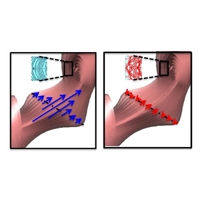
Plasma flow damping observed due to stochastization of the magnetic field
Katsumi Ida and colleagues at the National Institute for Fusion Science (NIFS) of the National Institutes of Natural Sciences (NINS) and Shigeru Inagaki of the Research Institute for Applied Mechanics (RIAM) of Kyushu University in Japan have clarified in experiment how the flow of magnetically confined plasmas is damped when the magnetic flux surface confining the plasma is disturbed (stochastization of the magnetic field). This is the first such observation in plasma for nuclear fusion in the world. ...
Clarifying the Particle Acceleration Mechanism through Shock Waves in a Plasma: Introducing Research Utilizing the Plasma Simulator
Plasma, which is a collection of charge-bearing particles, engages in movements that are extremely varied and complicated. ...
Measuring Negative Hydrogen Ion Density in Plasma: Seeking to Enhance High Performance Negative Ion Sources
In the Large Helical Device (LHD), in order to heat plasma confined by the magnetic field to a high temperature we use a neutral particle beam injection device. ...
Controlling Convection: Numerical Simulation Using Supercomputers
When we raise the temperature of gas, electrons separate from atoms and ions are born, and each ion and electron take on a plasma condition and move about freely. I...
The 18th Plasma Experiment Cycle Concluded: Advances in High-Performance Plasma
The plasma experiments on the Large Helical Device (LHD) conducted during this academic year concluded on February 5, 2015. Since beginning in 1999, this was the eighteenth round of experiments. ...
High-speed Photography of Changes in Plasma: High-speed Soft X-ray Camera Measurements
The Large Helical Device (LHD) confines high-temperature plasmas by making them float in the container that is ringed by magnetic lines of force. ...
New Developments in Research on Steady State Plasma: Maintaining High-performance Plasma for an Extended Period
In the Large Helical Device (LHD), which is able to generate the magnetic field that confines plasma only through superconducting coils, it is possible to maintain high-temperature plasma in a steady state manner. ...
Investigating Periphery Plasma by Inserting a Needle: The Electrostatic Probe Diagnostic
In the Large Helical Device (LHD) a magnetic field container is composed by a helical-shaped electromagnet, and plasma is confined therein. ...
Destroy the Symmetry Slightly and Skillfully Confine the Plasma
Seeking the realization of the future fusion energy, in the magnetic field confinement device we are progressing in research on confining high-temperature, high-pressure plasma in the magnetic field container. ...
Maintaining Plasma for Extended Duration: Enhancing the Performance of Steady-state Plasma through Increased Heating
In order to generate energy through nuclear fusion, plasma of a density of 100,000,000,000,000 parts per 1cc must be at a temperature that exceeds 120,000,000 degrees. ...
Natural Radioactive Sources which Use Materials in Our Daily Lives: Developing Practical Radiation Education Methods
Due to the nuclear power plant accident at Fukushima, the necessity of spreading proper understanding and education of radiation is increasing. ...
Investigating the Light from Tungsten: The Condition of Tungsten in a High-Temperature Plasma
In fusion plasma experiment devices beginning with the Large Helical Device (LHD), as well as the International Thermonuclear Experimental Reactor (ITER), plasma is confined in a magnetic field container and made to float in the vacuum so that the high-temperature plasma does not directly touch the vessel wall. ...
Intertwined in a Complicated Manner, Dispersing Heat: Control of the Peripheral Area through the Structure of the Magnetic Field Lines
Plasma cannot freely move vertically in the magnetic field lines, but plasma have the quality of moving extremely fast along the magnetic field lines. ...
Changing the Orbit by Collison: The Transport of Particles and Heat Caused by Collisions of Charged Particles
In magnetic fusion devices, beginning with the Large Helical Device (LHD), high-temperature high-density plasma is confined in the magnetic field lines container having a doughnut configuration. ...
Measuring Ion Temperature from the Movement of Electrons: The Microwave Collective Thomson Scattering Method
In the future, in order to produce energy through fusion, at a density of 100 trillion parts per one cubic centimeter the temperature of hydrogen ions must exceed 120,000,000 degrees. ...
Efficiently Confining High-pressure Plasma: Research on the Amount of Plasma Leakage
In the Large Helical Device (LHD), research is advancing on stable confinement of high-pressure plasma for a long duration in a nested container composed by magnetic field lines. ...
Measuring the Energy of Light Emitted from Plasma: Bolometer Diagnostics
In the Large Helical Device (LHD), high-temperature plasma is confined by a container made from magnetic field lines. ...
The Heating Region Expanded by Frequencies Two or Three Times Greater: Electromagnetic Wave Heating Using Higher Harmonic Waves
In the Large Helical Device (LHD), in generating high-temperature plasma, in particular, in heating electrons in a plasma, a powerful electromagnetic wave of 77 gigahertz (77,000 megahertz) frequency is used. ...

Magnets for fusion energy: A revolutionary manufacturing method developed
The National Institute for Fusion Science (NIFS), of the National Institutes of Natural Sciences (NINS) in Japan, has achieved an electrical current of 100,000 amperes, which is by far the highest in the world, by using the new idea of assembling the state-of-the-art yttrium-based high-temperature superconducting tapes to fabricate a large-scale magnet conductor. ...
Confining High-energy Particles: Detecting Lost Ions
In the Large Helical Device (LHD) we are heating high-temperature, high-density plasma confined in the magnetic field by high-energy particles whose energy is much higher than that of ions and electrons in the plasma. ...
Challenging Big Data: Fusion Experiments Supported by Leading Edge Japanese Information Technology
During 2013, in the Large Helical Device (LHD) we collected 891.6 gigabytes of diagnostic data per experiment, an average which became a new world record for the amount of data collected in this field. ...
Making Beautiful Hydrogen Ice: The Application of Extreme Low-temperature Technology to Laser Fusion
In a magnetic confinement fusion experimental device such as the Large Helical Device (LHD), we confine high-temperature plasma through the strength of the magnetic field. ...
Let’s Try to Destroy a Plasma: Stable Confinement of High-pressure Plasma
In the Large Helical Device (LHD) we are confining high-pressure plasma of high-temperature and high-density by utilizing the pressure of the magnetic field. ...
Solving the Multi-Layer Phenomena of Plasma through Computer Simulation
In the Large Helical Device (LHD) plasmas whose temperatures exceed 100,000,000 degrees are confined by a magnetic field. Because the behavior of such plasmas is extremely complicated, utilizing computer simulations we are carrying out reproductions and predictions from experiment results. ...
Producing a Negative Hydrogen Ion: A Negative Ion-type Neutral Particle Injection Heating Device
In the Large Helical Device (LHD), one of the methods used for heating plasma that has been confined by the magnetic field lines container is the NBI (a neutral particle injection heating device; Neutral Beam Injection), which is a method that injects into plasma a hydrogen atom beam that has been accelerated by high energy. ...
Measuring Electron Temperature above 200,000,000 Degrees: Using the Thompson Scattering Measurement Instrument
In the Large Helical Device (LHD) an electron temperature exceeding 200,000,000 degrees has been measured. Because such a high temperature cannot be measured by a conventional thermometer, we take measurements by utilizing a powerful laser beam. ...
Injecting Impurities by Pinpoint: Tracer Encapsulated Solid Pellet
In order to realize the future fusion energy generation it is necessary to maintain high-temperature plasma confined by a magnetic field. ...
The “Flare of My Dreams” in My Mind: Integrated Simulation Research
Experiment-based research that aims at achieving the future fusion energy is moving forward in the Large Helical Device (LHD). ...
Composing the Full Image of the Fusion Power Generation Plant: System Design Research
At the National Institute for Fusion Science, in seeking the future fusion power generation we are moving forward with conceptual designs for the helical fusion reactor. ...
A Cooling Design for the Superconducting Coils in the Helical Fusion Reactor
At the National Institute for Fusion Science we are advancing design research for the Force-Free Helical Reactor (FFHR) in moving toward the future fusion power plant. ...
Injecting Hydrogen Ice into Plasma: Supplying Particles through Solid Hydrogen Pellets
In the generation of fusion power in the future, in addition to maintaining the burning, a high-temperature plasma will be controlled by supplying fuel gas from outside into that high-temperature plasma. ...
Clarifying the Circulation Process of Plasma Particles: Simulations of Plasma at the Periphery
In the generation of fusion power in the future, the fuel to be supplied from outside will burn in a high-temperature plasma state. ...
The Seventeenth Cycle of Experiments Has Ended: The Performance of Plasma Has Improved Further
The seventeenth cycle of experiments using the Large Helical Device (LHD) concluded on December 25, 2013. ...
Catching “Dust”: A Real-Time Dust Detector
High-temperature plasma, on which research seeking fusion energy in the future advances, does not make direct contact with the vacuum vessel wall because it is maintained while confined in a magnetic field container inside the vacuum vessel. ...
Stronger, Lighter, Smarter: The Construction Design for the Fusion Reactor
At the National Institute for Fusion Science (NIFS), we are advancing conceptual designs for the Helical-type Fusion Reactor, which will aim at generating fusion energy in the future. ...
Evaluating in Detail Heating Efficiency through High-Energy Ions: Preparing an Experiment Analysis Code
In order to realize fusion energy it is necessary to effectively confine high-temperature high-density plasma. ...
Viewing Plasma through an Infrared Pinhole Camera: Developing a Method for Measuring Radiation Three-dimensionally
In order to achieve fusion energy it is necessary to confine high-temperature plasma that exceeds 120,000,000 degrees in its core. ...
Observing an Open Seam in the Magnetic Field Container: An Experiment in the Transport of Heat
In the Large Helical Device (LHD) we confine high-temperature high-density plasma in the magnetic field “container” produced by the superconducting coils. ...
The Design for the Fusion Reactor’s Superconducting Coils Power Supply: If Made to Flow Slowly, The Power Supply Decreases
At the National Institute for Fusion Science we are aiming to achieve fusion energy. In addition to conducting research experiments in high-temperature plasma using the Large Helical Device (LHD), we also are moving forward with conceptual designs for a future helical fusion reactor. ...
The Seventeenth Cycle of Plasma Experiments Has Begun
The seventeenth cycle of plasma experiments using the Large Helical Device (LHD) began today. ...
High Performance Diagnostics in the Hybrid Era: The Doppler Reflectometry
In order to realize fusion energy in the future it is necessary to confine high-temperature high-density plasma for a long period of time. For that reason, first, it is important to know the characteristics of plasma. ...
Viewing Atoms in a Plasma’s Core: Extreme Spectroscopy
In order to realize fusion energy in the future it is necessary to raise the performance of plasma confinement, generate high-temperature as well as high-density plasma at temperatures exceeding 120,000,000 degrees, and examine in detail the characteristics of plasma. ...
Seeking Long Sustainment of High-performance Plasma: Ion Cyclotron Resonance Heating
Having completed maintenance on the Large Helical Device (LHD), we began the vacuum pumping of the vacuum vessel on August 12, 2013, and this year’s operation of the LHD has now started. ...
A Torn Seam Magnetic Field Container that Exceeds Perfection: The Perturbed Magnetic Field Effect
In the Large Helical Device (LHD) the “container” braided by the magnetic field lines confines extremely high-temperature plasma exceeding several tens of millions degrees. ...
Research in the Design of a Future-Oriented Fusion Reactor: The Simultaneous Production of Energy and Hydrogen Fuel
At the National Institute for Fusion Science domestic and foreign researchers together are advancing the design of the helical-shaped Force Free Helical Reactor (FFHR). ...
Measuring the Electric Field in Plasma: Heavy Ion Beam Probing
Plasma is in a condition in which positive-charged atoms (ions) and negative-charged electrons are moving about independently of the other. ...
Investigating the Light from Highly-charged Ions: Basic Research in Highly-charged Ions Using CoBIT
In the future, in order to realize fusion energy it will be necessary to convert hydrogen, which is a fuel gas, into a plasma state in which ions and electrons are moving independently and to raise the plasma temperature to more than 120,000,000 degrees. ...
Joining Remote Experiments that Use a Network: Joint Experiments in the IT Age
The National Institute for Fusion Science (NIFS), as an inter-university research institute, is conducting joint research together with Japanese and foreign universities and research centers using experiment devices such as the Large Helical Device (LHD) and other research equipment. ...
Further Increases in Ion Temperature and Electron Temperature: Expanding the Area of High-temperature Plasma
In order to realize the future’s fusion energy through basic research it is necessary to achieve plasma at temperatures exceeding 120,000,000 degrees and to investigate through academic study the qualities of that high-temperature plasma. ...
The Mysteries of LHD Plasma Seen through a High-Speed Camera: Measuring Plasma through Images
In the Large Helical Device (LHD) we are observing and measuring the conditions of plasma through high-speed cameras. ...
Accelerating the Negative Ion Beam: Aiming toward Heightened Performance of the Beam Injection Heating Device
One method for heating plasma in the Large Helical Device (LHD) is by injecting a high-energy neutral beam. Last year, using this heating method, we achieved an ion temperature of 85,000,000 degrees. ...
Searching for Intermittent Phenomena in Plasma: Fundamental Plasma Research Using the HYPER-I
At the National Institute for Fusion Science (NIFS), in seeking the realization of the fusion energy of the future we are moving forward with research on high-temperature plasma using the Large Helical Device (LHD). ...
